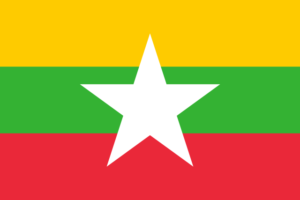
Region: Asia
Disability Definition
According to the Rights of the Persons with Disabilities Law, a person with a disability means a “person who has one or more of the long-term physical, vision, speaking, hearing, mental, intellectual or sensory impairments from birth or not”, Disability means “being unable to fully participate in society due to the various barriers/hindrances in physical and environment, attitude and perspective and others.”
Legislation
The Rights of the Persons with Disabilities Law aims to:
Take better care of the persons with disabilities in accordance with the Constitution;
To implement more effectively the provisions for the rights of persons with disabilities that are recognized in the UN Convention;
To enable the persons with disabilities enjoy the human rights and fundamental freedoms of citizens on an equal basis with others;
To integrate in the society of different fields such as politics, social, education, health, economic, culture, and public affairs on an equal basis with others; etc.
Myanmar ratified the UN Convention on the Rights of Persons with Disabilities in 2011.
Reference: ‘We are the same’ – focusing on people with disabilities in Myanmar (bbc.com)
Employer Legal Requirements
The Rights of the Persons with Disabilities Law (2015) ensures in chapter 10 that people with disabilities have the right to work on an equal basis with others without discrimination, and that employers shall employ a certain number of PwD to meet a quota (though the quota was not mentioned in this document), paying a fine when not possible. Employers are also required to arrange an accessible working environment.
Accessibility Requirements
In addition to requiring equal access to job opportunities for people with disabilities, the Rights of the Persons with Disabilities Law (2015) ensures in chapter 7 that there shall be easy accessibility and mobility for PwD in public, communication, and information sectors. Initiatives such as access to vocational trainings, participation in labour organizations, rehabilitation, reasonable accommodations.
Cultural Norms
According to a study done by MIMU, Myanmar’s education system is “not inclusive for children with disabilities.” Additionally, people with disabilities in Myanmar typically have “challenges in access to education, fewer livelihood opportunities, and reduced social inclusion.”
Reference: Report_Analytical_Brief_Disability_MIMU_18Aug2021_ENG.pdf (themimu.info)
Business Practices/Examples
Additional content coming soon.Insights
“In 2020, roughly 6.7 per cent of Myanmar’s estimated 55 million inhabitants, equivalent to 3.6 million people, had a disability.”
“In 2015, people with disabilities aged 15 and over were more than twice as likely to be unemployed and 8% of Myanmar’s population was considered to be outside of the labour force due to illness, injury or disability with a lower rate for females due to a higher likelihood of taking up domestic work.”
Reference: A window to the world for children with disabilities in Myanmar | UNICEF and Report_Analytical_Brief_Disability_MIMU_18Aug2021_ENG.pdf (themimu.info)
Supplier Diversity
Additional content coming soon.Talent Sourcing Resources
Additional content coming soon.Additional Resources
Additional content coming soon.References
- Myanmar Centre for Responsible Businesses: Employing Persons with Disabilities.
- The Union Parliament Law No. 30/2015
